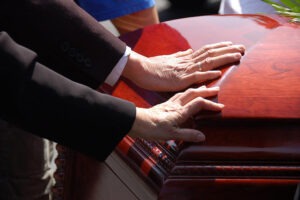
In a wrongful death case, the person bringing the lawsuit isn’t the victim, but a personal representative acting on behalf of the victim’s family. While that fact differentiates a wrongful death case from other types of personal injury cases, they are all governed by tort law. This means a plaintiff in a wrongful death case must be able to prove the same four elements of a personal injury lawsuit, but with minor variations.
The Four Elements of Proving a Wrongful Death Case
Duty of Care
The first of the four elements in a wrongful death case is showing that the defendant owed a duty of care to the decedent. This means showing that the defendant was legally responsible for acting in a manner that would ensure the safety of the decedent. This might be something as simple as establishing a store owners responsibility to keep store floors clear of spills and debris.
Breach of Duty
Next, the plaintiff must show that the defendant breached that duty. This can involve acting in a manner that increased the risk of harm, or in neglecting to act to prevent harm. Using the same example, perhaps the store owner saw the spill and neglected the responsibility to instruct their employees to clean it up.
Causation
The third element is causation, which means proving that the breach of duty was directly responsible for the harm caused to the decedent. If the decedent slipped on the spill and left unharmed, only to be run over by a truck at a nearby intersection, the store owner isn’t liable for that wrongful death. However, if the decedent slipped on the spill and hit his head on the corner of a countertop, as he fell, the store owner would be responsible for causing the injuries, or death, of the individual.
Damages
This is another area in which a wrongful death case varies from other personal injury cases. Proving damages means showing how family members (spouse, minor children, elder parents) have been financially affected by the death of the individual. This is a complex area of the case and this is why it’s especially important to rely on an experienced personal injury attorney, such as Brett Cain, to establish your case. Your attorney will know what factors to present in court that will show the losses suffered by the family.
What Are the Damages in a Wrongful Death Case?
In a wrongful death case, there are many different types of damages the family will suffer, as a result of the death of their loved one. Primarily, the accident that caused the death will have caused a specific financial burden.
- Medical expenses incurred to treat the decedent, before his death
- Funeral and burial expenses
- Loss of expected income
- Loss of benefits, such as health insurance
- Loss of inheritance, as a result of the untimely death
Emotional losses may also be calculated in financial terms;
- Mental anguish, or pain and suffering, caused by the death
- Loss of nurturing and care, guidance, and advice, which the deceased would have provided
- Loss of love and companionship
- Loss of consortium, which the deceased would have provided to a spouse.
As you can see from this brief overview, filing a wrongful death claim is a very complicated matter and requires a deep understanding of tort law. Brett Cain and his associates at the Cain Firm have the expertise and knowledge to help you navigate this complex matter. Additionally, hiring a lawyer provides you with a rational, logical legal advocate at a time of immense grief. While a lawsuit may be the last thing you want, you and your loved ones deserve compensation to cover the losses that your family’s tragedy have caused.
For more information please visit our site.







